
It is fitting that Africa converse with Africans at home and abroad, as opposed to continually beseeching Caucasians in the language of acquiescence to the destructive power of the paradigm; the language of compromise and culpability in the paradigm’s corruption; the language of ignorance of our wealth, our power, and our collective heritages; the language of defeat. Why should Africa present an image of itself as a place yearning to take an inferior place among inferior Caucasian nations, when Africa is the source of the very concept of civilization?
The image of the black panther is a symbol of Black power in the Caucasian paradigm. I use Thomas Kuhn’s definition of paradigm developed in his essay “The Structure of Scientific Revolutions”¹ published in 1962. In this essay, Kuhn, a Harvard scholar, defines a paradigm as a conceptual box which validates and legitimizes the ideas within it, and invalidates and renders invisible whatever is outside it.
A paradigm defines what is known and how it is known. It defines the relevance of what is known. A paradigm dictates what can be known and should be known, as well as that which is not known and should not be known. It dictates what’s included in one’s experience and what’s excluded. It defines how people should understand and respond to their experiences, both those which should be and are included, and those which should be and are excluded.
With regard to knowledge, a paradigm is the shared set of understandings or premises with which knowledge practitioners work. It defines the problem to be solved as well as its solution. A paradigm allows a researcher in the process of solving a problem to distinguish those facts that matter from those that do not. It defines what is relevant, controls fact-gathering and identifies the boundaries within which problems can be understood. Within the framework of the paradigm, practitioners are not supposed to discover new sorts of phenomena. Rather, the paradigm suppresses and makes invisible whatever does not conform to it.²
The Caucasian Paradigm. A Caucasian paradigm is in force planet-wide. The life experience of every individual and creature on the planet – including animals, who experience the planet with people, and including ecosystems, with their astonishing variety of insects and flora, indeed, every sentient entity upon our sentient planet – is currently occurring within a Caucasian paradigm. We perceive ourselves and all aspects of our lives and our planet through the Caucasian paradigm.
The aims of the paradigm are to stunt the emotional, spiritual and intellectual growth of everyone on the planet including Caucasians themselves (indeed, though Caucasian people are told they’re “privileged” within the paradigm, most do not significantly benefit from being in the paradigm); to remove from the planet any trace of the innovations bequeathed by advanced Black civilizations; and to exploit the resources of the planet without regard for human life. Such is the ethos of the paradigm that exploitation of the planet’s resources is ranked higher in importance than life itself, and is the cause of the ruin of everything upon which life depends. Despite the fact that the paradigm permits the destruction of life-sustaining resources, it communicates the notion that the processes of destruction are natural, normal, organic and inevitable. The paradigm is able to maintain legitimacy because of several well-developed premises created within it.
A paradigm dictates what can be known and should be known, as well as that which is not known and should not be known.
One premise and fallacy has its foundation in the ideology of evolution as Caucasian scientists have defined it. This premise is that there is an evolutionary, teleological movement from pre-history to history. This movement as the Caucasians understand it is captured in a one-minute video by Caucasian filmmaker, Emma Allen. The video starts with the image of a face of a Black woman against a background so dark the face is barely seen. Superimposed upon the face are several species of early life forms from one-celled microorganisms to mammals. The video, in a succession of one-second frames, depicts the evolution of life forms, culminating in the image of a face of a Caucasian woman, which morphs into a holographic image of the face, which then collapses into a microchip and disappears into blackness.
This, as Allen depicts it, is the history of humanity, a history in which both human and animal life on the plant evolved from primitive to modern forms, with the modern human form represented by the Caucasian woman, a modern human form which becomes a form of machine/artificial intelligence. This – gender transgression notwithstanding – is the ideology of evolution as put forward by scientists celebrated by the paradigm. It’s the ideology which legitimizes the Caucasian paradigm, because it’s used to cement within people’s minds the notion that Africa is a prehistoric place and Blackness a prehistoric condition, and whatever we see of Africa today are remnants of that prehistoric condition – remnants of the past which exist alongside modernity and which will eventually cease to exist. This ideology is put forward in textbooks and aggressively marketed in schools.

This aggressively marketed image, and the many, many versions of it, has effectively contributed to the acceptance of the fallacy of evolution.
It’s interesting that Kuhn himself recognized the role of textbooks in the perpetuation of popular, but inaccurate, ideas about science. Textbooks, he said, present a simplified narrative of the history of science, and do not give the true history of science. Within the context of this analysis, textbooks present a simplistic narrative of the history of humanity, a narrative which traces “man” from primitive beginnings to a present modern condition, a narrative which does not give a true history of humanity.
Three Prominent Features of the Caucasian Paradigm. The teleological movement is a prominent feature of the paradigm, and several ideologies are caught within the movement. For instance, a significant event within the paradigm was the resetting of the planetary calendar to 1AD, rendering whatever came before 1AD as pre-history, and whatever comes after it as history. 1AD signalled the beginning of a new era ushered in by a new year the Roman agents of the paradigm called anno domini, a Latin term meaning “In The Year of Our Lord” a term which signalled the ascendancy of the Roman Empire amidst the final disintegration of the Black superpower, Kemet.
Anno domini infused the accompanying political resetting of time with an emotional dimension that, over time, made it easier for people to buy into the strange, new Roman religion, Christianity, with its strange, newly-created Caucasian male god. The fact is we are not living in the year 2018. Both the planet and humankind are far, far older. Furthermore, the idea that there are two historical timelines, one starting from 1AD and moving forward in time, and the other starting from 1AD and moving backward in time is ludicrous, but because the paradigm legitimizes this fallacy, people believe in it.
Above: The widespread use of the Gregorian calendar which “starts” at 1AD prevents an accurate measure of the age of such ancient Black monuments as the Sphinx and the Olmec heads, and furthermore, regards such monuments as prehistoric.
The teleologial movement is chiefly responsible for people buying into the paradigm. By virtue of that narrative, Caucasian scientists sell the notion that the “world” in which we live is modern; that it has progressed from a primitive state to a modern state; that Caucasian products are elements of modernity and proof of modernity, progress and advancement; and that whatever is deemed primitive is irrelevant. Because people accept that premise, they are prone to accept the ideologies created within the paradigm as legitimate.
Another important process in the paradigm was the privileging of the male and subordination of the female, a process which is ongoing to this day. The subordination of the woman takes place through the creation of religious mythology which replaces the Black female creatrix with a Caucasian male creator; through the creation of educational institutions which teach the ascendancy of patriarchal societies over matriarchal societies and advocate the silencing of women; and through medical practices which institutionalize the killing of female foetuses and girls, the sterilization of women and the mutilation of female reproductive organs.
A third significant process in the paradigm was the privileging of the Caucasian and subordination of Black people through the creation of the socio-scientific myth of racism. This process was executed by virtue of the creation of academies which promote the ideology of “race” as well as the creation of such academic disciplines as anthropology and social science, which legitimized the fallacy to such an extent that “race” is regarded as a normal, organic aspect of the human experience. However, a perusal of historical documents would reveal race to be a recent invention. The subordination of Black people continues to be perpetuated through the creation of socio-economic stratification according to racial classification, the stratification of people according to the shade of their skin, the conferring of honorary Caucasian status on People of Color, the genocide of Black people and People of Color, and the ignoring and invalidation of the Black presence on the planet.
The fact is that ancient Black civilizations were more advanced than the present paradigm, and this is clearly demonstrated by the physical evidence left behind by those civilizations.
Above: Ancient Black civilizations such as those of Kemet, Mali and the Moorish civilization of Europe were more advanced than the present paradigm.
This alone is grounds for debunking the evolutionary theory with its split timeline, because the evidence suggests a devolution from the more advanced matriarchal Black civilizations to the less advanced patriarchal paradigm. One of the most advanced civilizations was Kemet, a technologically advanced civilization ruled by Black pharaoh queens for millennia.
This fact has been assiduously kept out of the Caucasian paradigm. Though some Black thinkers are re-acquainting themselves with Kemet, the knowledge of Kemite culture has already been put through a whitening and masculinizing process by Caucasian “Egyptologists” working for Caucasian universities and museums, and has been altered to reflect a Caucasian patriarchal version of Black matriarchal Kemet. The only recourse is for Black thinkers to take the time to learn the ancient Kemetic language, the Mdu Ntr, and study the ancient texts for themselves without the methodological and ideological apparatuses supplied by the Caucasian paradigm, and build up for Black students of Kemet an authentic body of Black methodological and conceptual tools. Stepping outside the intellectual parameters of the Caucasian paradigm is an important first step in destroying the destructive paradigm.
The Black Panther in the Caucasian Paradigm. The image of the black panther is significant within the Caucasian paradigm. It represents Black power. The image of the black panther bespeaks bravery, excellence, skill, the willingness to use one’s skill to out-manoeuvre a cunning enemy, the willingness to come out fighting with every intention of winning the fight.
A panther is not actually a species of animal. The appellation panther is given to a big cat, usually a leopard, jaguar or puma, which is melanated. So a panther is a melanated, or black, leopard or jaguar or puma, and it’s speculated that its black color is brought about by a recessive gene in the animal. So a typical tawny leopard could give birth to three cubs, two of which would be tawny, while the other may be melanated. The black panther is native to Africa and Asia and is said to be a solitary and fearsome nocturnal creature. Because black panthers are relatively rare, there has been superstition surrounding their sightings in some geographical locations.

A melanated big cat, called a panther, is a solitary, fearsome creature.
It’s interesting that both the name and image of the black panther emerged within the popular consciousness in the USA – one of the most racist countries on the planet – in the year 1966. In that year, two important events occurred. One was the creation of the Black Panther Revolutionary Party in Oakland California by two Black men, Huey Newton and Bobby Seale, and the other was the publication by a Caucasian author, Stan Lee, the creator of several super hero comic books, of the first book in the Black Panther graphic novel series.
Newton and Seale were inspired by the symbol of the black panther used by the Lowndes County Freedom Party (LCFP) of Mississippi, a political arm of the Student Nonviolent Coordinating Committee (SNCC), and a militant organization within the Civil Rights Movement. The LCFP was a Black independent political party founded in 1965 by Stokely Carmichael a.k.a. Kwame Ture to confront the intimidation tactics of the Klu Klux Klan and empower the majority Black population of Lowndes County to participate in the civil life of the county.
Newton and Seale sought Ture’s permission to use the black panther as the symbol of their party, and later recruited him into the party. The Mississippi illiteracy rate was so high, political parties were required to have a symbol so people who could not read could identify them. John Hulett, a co-founder of the LCFP, explained that they chose the symbol of the black panther to represent the ideals of the party, because the black panther, though a vicious animal, “never bothers anything, but when you start pushing him, he moves backward, backward, and backward, and then he comes out and destroys everything that’s in front of him.”³
The image of the black panther represents Black power; it bespeaks bravery, excellence and the willingness to come out fighting with every intention of winning the fight.
This was not the first time Black Americans used the black panther as a symbol of Black indomitability. In 1942, the majority-Black 761st Tank Battalion, a segregated combat unit of the United States army, was constituted. Because their insignia carried the image of a black panther, they became known as The Black Panthers.
The 761st Tank Battalion was regarded as one of the most effective tank battalions in World War II, and many of its Black members received medals, including one Medal of Honor, 11 Silver Stars and 300 Purple Hearts. The Black American baseball superstar, Jackie Robinson, was a member of the 761st Tank Battalion.
Above: The 761st Tank Battalion, the celebrated Black Panthers of World War II.
The purpose of the Black Panther Revolutionary Party was to defend Black communities from attack by Caucasian American police and armed forces. Members wore distinctive garments – black leather jackets and black berets – and openly carried guns. The leadership of the party – Huey Newton, Bobby Seale, Kwame Ture, Angela Davis, Eldridge Cleaver, Assata Shakur among others – were educated and erudite frontline activists who articulated an anti-racist politics, and who engaged in broad-based and popular conscientizing activities throughout Black communities, such as rallies, televised interviews and marches. They wrote books, published a newspaper and taught in educational institutions.
The Black Panthers staged daring “Panther Patrols” in which, armed with guns they confronted police with guns, thus sending the clear message they were dead serious about protecting Black communities. The Black Panthers also created successful social programs in Black communities, such as health care, educational and food programs. As a result of their confrontation of racism in the USA, they were under constant surveillance and investigation by the FBI and the CIA. The FBI’s Counterintelligence Program (COINTELPRO), created by J. Edgar Hoover to destroy dissidents, specially targeted the Black Panther Party. Members were beaten, imprisoned and exiled; some of them were assassinated.
Above: The Black Panther Party carried out militant Panther Patrols, as well as social programs in Black communities.
But though the Black Panthers were militantly anti-racist, the party remained stuck within the Caucasian paradigm. Its intellectual members who articulated its manifesto and developed its philosophy drew upon the intellectual production of the paradigm, using the Caucasian conceptual framework of Marxism to understand the Black experience in the USA, as did several Black intellectuals of that era. But Marx’s historical materialism provides no reprieve for Black people condemned to social death by the Caucasian paradigm. This is because Marxist ideology is itself a construct of the paradigm and is comfortably located in its institutions of higher learning. As such, the organization continued to employ the same Caucasian intellectual concepts that not only define Black people in racist terms, but attempt to write us out of history. This is a consequence of any attempt to fight the paradigm from within the paradigm using the apparatus of the paradigm – we are beaten by the very weapons with which we fight. This is because you can’t tweak parts of the paradigm. You can’t fix racism, or sexism, or capitalism, or poverty, or climate change or any of its parts, because they fit together as mutually reinforcing components of the whole. You have to get rid of the whole paradigm.
Though the Black Panther Party was ultimately defeated because of the unrelenting aggression of the American state – itself a prominent ideological instrument of the Caucasian paradigm – its important work is critical to the global movement for Black empowerment.
The image of the black panther was also part of the ideography of Kemet. The skin of the black panther was worn by Kemite priests during certain rituals, and in the Book of the Coming Forth by Day, an important Kemite text of spiritual and philosophical thought, the pharaoh is portrayed passing through the ceiling of heaven wearing the skin of a black panther draped across his shoulders.

Sekhmet, lioness-headed neter of Kemet, the original symbol of Black power.
The image of the black panther, the melanated big cat, occurs within the Caucasian paradigm as a symbol of Black power, the symbol of resistance to racism, along with the melanated lion, the Conquering Lion of the Tribe of Judah associated with Rastafari, the Black Israelites, Marcus Garvey and Haile Salassie of Ethiopia. Ancient Ethiopia itself is regarded as an advanced Black civilization, with an authentic body of knowledge and iconography. It’s speculated that the Ethiopians and Kemites share the same ethnicity. But an even older image of a melanated big cat is the image of Sekhmet, the lioness-headed neter of Kemet, the blueprint of all images of melanated big cats. Sekhmet, the black lioness, is the original symbol of Black power, a symbol which pre-dates by several millennia the genesis of the Caucasian paradigm.
Above: The Conquering Lion of the tribe of Judah, the black lion, another symbol of Black power in the Caucasian paradigm.
Thus, the symbols of the black panther and the black lion enjoy a heritage rooted in authentic Black civilizations which flourished before the colonization of Black populations by the Caucasian paradigm. This dimension of the black panther is a knowledge area fastidiously excluded from the paradigm, but which is a key to understanding the enthusiastic reception of Black Panther, the movie among Black people.
Appropriation of the Image of the Black Panther. The publication of the first Black Panther superhero graphic novel by Stan Lee, who was credited with creating most of the Marvel superheroes, occurred within the same racially charged milieu as the Black Panther political organizations. Lee said he created the series because of the absence of Black superheroes, and that he played around with different names for the superhero in an attempt to distance the graphic novel from the political organizations. However, the name Black Panther was the one he eventually settled on.
The original Black Panther stories pandered to the racist stereotypes of the Caucasian paradigm, and it’s not surprising the original series was named “Jungle Action.” In 1972, the series got an upgrade. By this time, Lee had been promoted to editor-in-chief of Marvel Comics, and another Caucasian writer in the Marvel production team, Don McGregor, along with Billy Graham, the Black artist credited with developing the image of Luke Cage, took over the series. McGregor said he felt the series was old-fashioned and racist. He and Graham revamped King T’Challa, created antagonist, Erik Killmonger and broke the mould of the typical comic book by using the graphic novel format. The series came to an end in 1976.
Above, Stan Lee and the Black Panther: Jungle Action. Below, Don McGregor and The Black Panther: Jungle Action.
The creation of the Black Panther superhero during the period of the prominence of the Black Panther Party had the effect of capturing the image of the black panther as symbol of resistance to racism in the real socio-economic space and re-placing it within a fantasy universe populated by Caucasian superheroes. If the symbol was unable to represent the final defeat of racism in the socio-economic sphere, it was brought, replete with racist stereotypes, fully within the control of the paradigm’s apparatus of representation in the sphere of the arts and entertainment. This reinforced the stereotype of Black people as ‘minorities.’
Above: The image of the Black Panther is placed within a fantasy universe populated by Caucasian superheroes, thus reinforcing the stereotype of Black people as minorities.
But the prolonged liminal situation of Black people in the Caucasian paradigm meant that the misappropriation of the image of Black power ultimately became the means of its liberation. The Black Panther story developed in complexity and its popularity grew when Black writers began to work on it.
How Black Writers Reclaimed the Black Panther. From 1998 – 2003, Christopher Priest, Marvel’s first Black writer and editor was assigned to the creation of a new Black Panther series. Priest was deeply resentful at being typecast as a Black writer in what he regarded as a racist and sexist industry. The typecasting of Black writers and artists within the graphic novel industry was a practice in which Black writers were assigned to stories about Black characters. Usually, the stories had low visibility and lacked prestige. This was the condition of the Black Panther graphic novel when it was placed in Priest’s hands. He’s credited with laying the foundation for the 21st century iteration of the Black Panther, for overhauling both the character of T’Challa and the kingdom of Wakanda, and for making T’Challa a more powerful superhero and an astute monarch and statesman. In 2005, Black writer and TV executive, Reginald Hudlin, was commissioned by Marvel to continue to evolve the story arc during a period when he was president of Black Entertainment Television (BET). Hudlin sought to make the Black Panther more complex, and introduced T’Challa’s half sister, Princess Shuri, as well as a romance between the Black Panther and Storm, the African female member of the X-Men. His run ended in 2016.
Above: Writer, Christopher Priest, and The Black Panther: Enemy of the State. Below: Writer Reginal Hudlin and Who is The Black Panther?
From 2016 to 2017, Marvel commissioned Black writer, Ta-Nehisi Coates, along with veteran Black artist, Brian Stelfreeze, to be writer and illustrator of a new Black Panther series. Coates, an award-winning writer, took a serious approach to the Black Panther characterisation and narrative, and continued the development of the complexity of T’Challa and Wakanda initiated by Priest and Hudlin. As the popularity of the Black Panther graphic novel series grew among Black audiences, Marvel continued to fan the flame of that popularity, particularly during the period of the run up to the release of the movie. In 2017, the company commissioned Jesse Holland to write a novel about the Black Panther, which quickly sold out.
Above: Ta-Nehisi Coates and The Black Panther: Nation Under Our Feet. Below: Writer, Jesse Holland and Who is The Back Panther?
Though the world of the Black Panther superhero was conceived within the imagination of the Caucasian paradigm and was managed by its corporate apparatus, that world was submitted to a sustained re-visioning through the sensibility of Black writers and artists who – though indoctrinated into the ideologies of the Caucasian paradigm – were committed to interrogating those ideologies and making connections with the Black aspect of their experience within the paradigm. This enabled the Black writers to re-claim for their readership the image of the black panther as symbol of Black power. This sustained act of subversion was indispensable to the success of the movie.
The Significance of Black Panther, the Movie, in the Caucasian Paradigm. In 2009, the Walt Disney Company acquired Marvel Entertainment, the parent company of Marvel Comics and the entire Marvel Universe, and promptly started to put out blockbuster superhero movies, most notably, Iron Man 2 and 3, The Avengers and Thor. It’s important to understand the history of the Walt Disney Company, that the purpose for its genesis was primarily the production of propaganda in the era of World War II. It’s well known that Walt Disney, himself, was openly racist, and was greatly admired by Adolf Hitler, who also used film as a means of indoctrination and propaganda in Nazi Germany. The Disney Company, and by extension, its subsidiary, Marvel, is a highly effective instrument in the propaganda apparatus of the Caucasian paradigm, and there is no evidence to suggest Disney continues to be anything other than an instrument of propaganda, as a close reading and analysis of any of their movies would confirm.
Such being the case, Black Panther, the movie, carefully built upon the insight of Black writers attuned to the Black aspect of their experience in the paradigm, is a potentially destabilizing force within the paradigm’s propaganda machine. It continued the act of subversion started by the Black writers of the graphic novels and remained faithful to the ethos of the fictional world of Wakanda they so meticulously developed. As such, the Black director of the Black Panther movie, Ryan Coogler, who co-wrote the screenplay with Black filmmaker Joe Robert Cole, also interrogated the paradigm and made connections with the Black aspect of their experience within the Caucasian paradigm. Before making the movie, Coogler went to Africa and made personal connections with the land and people.
Above: Ryan Coogler (left) co-writer and director of The Black Panther. Joe Robert Cole (right), co-writer.
The movie has been described as the best movie in the Marvel Cinematic Universe (MCU), grossing, according to one estimate, $704 million worldwide within the first month of its release, making it the highest grossing film of 2018. It crushed box offices in the USA because of its immense patronage by Black audiences, precisely because of what the black panther has always represented for Black people – a symbol of Black power – a symbol, it is true, caught within the Caucasian paradigm, but one possessing a pedigree which both predates and transcends the paradigm. As such, its dazzling success communicates a message about the consciousness of Black people at this time, such as the kind of knowledge we seek now, and what we expect of our artists, especially those who have been given much.
Above: The Black Panther, played by Chadwick Boseman, is the symbol of Black Power in the 21st Century.
Within the context of the corporate world of filmmaking, Black Panther, the movie, may have been a means by which Disney tested the Black movie-going market, and company executives now have a clear idea of the sheer size of that market. They now see how erroneous was a premise long-held by film companies that the core movie going audience, both in the USA and worldwide, is a Caucasian audience and that movies featuring Black protagonists or all-black casts cannot do well in the market. Black Panther has completely destroyed that argument. The Caucasian producers of the Black Panther have reaped tremendous financial reward from their experiment, while Black consumers of the film reaped the long hoped for reward of the possibility of being released from the social death to which the Caucasian paradigm condemned them.
Though the Black Panther superhero was conceived within the imagination of the Caucasian paradigm, he was reclaimed as a symbol of Black power through the sensibility of Black writers and artists who made connections with the Black aspect of their experience.
Though it’s clear Marvel’s intention was to bring the symbol of Black power under control, there is the sense the company misunderstood its audience. There is no doubt Marvel knows all about how to market a product to a Black audience (and marketing to Black consumers is an important knowledge area in the Caucasian paradigm), and there’s no doubt the company has loads of analytics that home in on the demographics of its audience. But it’s equally clear it doesn’t actually innerstand the Black audience. It does not seem to overstand, for example, that despite the hair straightening, the skin bleaching and the acquiescence to the domination of the Caucasian establishment, within the unconscious of every Black person is an unceasing communion with the Motherland, and it does not appear as if anything, not racism, not slavery, not dispossession of any kind, not even the grossest attempts at denial and repression on the part of some Black people, can interrupt it.
For this reason, it’s impossible for Black people to assimilate into the Caucasian paradigm without seriously mutilating their minds and bodies, and mutilation is the price millions of Black people pay for attempting to assimilate. But even after all the mutilations, Black people still can’t assimilate. That’s because we don’t belong in the Caucasian paradigm. It’s not our world. Its ways are not our ways. For this reason, we’re always sort of inside the paradigm, and sort of outside of it, and as such, we’re always a constant threat to the stability of the paradigm. With the right triggers, the unconscious connection with the Motherland that keeps us from fully assimilating into the paradigm can become a conscious force for the destruction of the paradigm. And this is the purpose for excluding Black knowledges from the paradigm in the first place. Was the Black Panther movie such a trigger?
The Political Importance of Black Panther, the Movie. For Black audiences, the movie was, at the very least, an opportunity to see themselves on the big screen in the same manner in which Caucasians have been portrayed. It’s understandable that Black people might wish to be represented in film the way Caucasians are represented because the Caucasian paradigm excludes all standards of intelligence and dignity except a Caucasian standard. The Black Panther movie portrayed Black characters as intelligent and dignified, the same way Caucasian characters would have been portrayed had the film been about them.
For the millions of Black people worldwide who saw the film, it was a real feel good moment and more. The movie – true to the Black Panther story arcs developed by the Black writers of the graphic novels from the 1990s onward – was set in Africa, in a country called Wakanda, which was never colonized by Caucasians, and therefore, is assumed to be a representation of authentic Africa. Indeed, the Black creative team led by costume designer Ruth Carter, and production designer Hannah Beachler, drew upon African dialects, African national costumes, and many elements of a number of African cultures to create what Black people – even those in Africa – could accept as real African culture, and suggest that ungirding the many nations of the African continent is cultural unity.
Above: Wakanda, portrayed as a country which has never been colonized by the Caucasian paradigm, is representative of authentic Africa.
This is important. Black people instinctively know, though many try to deny, that we do not belong to the Caucasian paradigm, but the paradigm continues to communicate the idea through its ideological and representational apparatuses that we are part of a global human family, the part which needs to be brought into modernity or excised, which can be achieved either through assimilation into the paradigm or genocide. The idea that there’s a place on the planet that has never been colonized by the paradigm, a place of beauty, wisdom, wealth and splendour, a place that belongs wholly to Black people, a Black homeland, is one which resonates with our intuitions about who we really are and where we’re really from. In portraying this homeland, Coogler not only displayed cinematic perfect pitch, he opened the possibility for Black people to consciously initiate the process of reaching outside the paradigm and destroying it, for the paradigm cannot be destroyed from within; it can only be destroyed from outside.
But since the knowledge, imaginations and sensibilities of the Black Panther’s Black creative team and the Black viewers of the movie – even in Africa – have, in reality, already been colonized by the Caucasian paradigm, what audiences actually saw and accepted was the Caucasian paradigm’s version of authentic Africa. Since very few people on the planet – if any – know what it’s like to live somewhere completely untouched by the paradigm, Wakanda provides an imaginary blueprint for what such a place could be like, which works upon the consciousness as powerfully as if it were real. This, essentially, is the appeal of Black Panther, the movie – Black people identified with Wakanda as if it were a real place.
Furthermore, Coogler displayed a subtle genius in understanding his audience. He knew a lot of his viewers would be folks able to make connections among the several dimensions of the Black Panther iconography – mostly mature people with a good knowledge of Black history, and those who had grown up reading the Black Panther graphic novels. Then there was his younger audience – aficionados of the superhero universe, lovers of gritty action scenes and spectacular special effects, many of them gamers proficient with everything the world of high technology brought to entertainment. He displayed an impressive facility in bringing together his conscious, Black-history-loving audience who had seen Hidden Colors and his tech-savvy, superhero-loving audience who had seen Iron Man, and it was only obvious he would need to raise the bar for a superhero who was far richer than Tony Stark, much better connected and way smarter. The political message and off-the-chains special effects, his ability to place futuristic Africa and traditional Africa comfortably together on the same screen was nothing short of brilliant.
Above: Brilliant high-tech special effects in Black Panther, the movie.
Important Statements Made In the Movie. Coogler paid tribute on several occasions in the film to several important elements of the black panther symbolism. One was his acknowledgement of Kemet through the melanated big cat, not Sekhmet, but her sister, Bast, who Wakandans revere as creatrix.
Above: Bast, cat neter of Kemet, revered by Wakandans as creatrix in Black Panther, the movie. Though Bast in Kemite culture was a small cat, in Wakanda, she is portrayed as a big cat, a panther.
Why did the Wakandans prefer to worship Bast instead of her sister Sekhmet, who the Kemites regarded as creatrix, who was actually a big cat and who is more clearly the blueprint of the black panther? Maybe because Bast was tamer. Sekhmet’s uninhibited aggression was so great, even the gods feared her. Perhaps the Caucasian gods of the paradigm fear her too.
The tribute to Kemet was further made through the reproduction in the movie of important Kemite gestures of power.
Above: Black Panther, the movie pays homage to important Kemite symbolism.
Coogler pays tribute in the movie to the Black Panther Party through the Dora Milaje warriors, who reproduced some of the military gestures of the Panther Patrol. The Dora Milaje was also a connection to the female Dahomey Warriors of Benin called the N’Nonmiton, which means “our mothers” in the language of the Fon people of Dahomey.
Above: The Dora Milaje warriors paid cinematic tribute both to the Black Panther Party and the N’Nonmiton of ancient Benin.
Coogler paid tribute to the Black Panther Party through charismatic antagonist, Erik “Killmonger” Stephens, who – as did Coogler himself – came from Oakland in California, the birthplace of the Black Panthers. In fact, Killmonger was the Black Panther Party, and throughout the film, enunciated the party’s revolutionary manifesto. Killmonger was interested, as was the leadership of the Black Panther Party, in unleashing a revolution on the racist paradigm and rescuing Black people from the dispossession to which the paradigm subjected them. Coogler and Cole set up a sustained discourse between Killmonger and the thoughtful T’Challa, which echoes the intense debate which has been going on for a long time between the Black diaspora and the African continent.
Above: Erik “Killmonger” Stephens, played by Michael B. Jordan, was the embodiment of the Black Panther Party, and enunciated its revolutionary politics.
It’s impossible for Black people to assimilate into the Caucasian paradigm without seriously mutilating their minds and bodies, and mutilation is the price millions of Black people pay for attempting to assimilate.

Body scars have many different meanings in the cultures of West Africa. In the Black Panther, each scar on Killmonger’s body represented a kill.
Erik Stephens is orphaned as a boy when his father, N’Jobu, is murdered by King T’Chaka while N’Jobu is on a clandestine mission in the USA. T’Chaka is N’Jobu’s brother and T’Challa’s father. Young Erik Stephens, born in the USA but of Wakandan royal lineage by heritage, grows up in poverty in an urban inner city dreaming of the day he would challenge the king of Wakanda and ascend to the throne, for when that happens, he would unleash a revolution the likes of which the world has never seen. His plan is to arm Black revolutionaries all over the planet with super-powerful weaponry made of vibranum, and put an end to racist domination of Black people once and for all.
In preparation, he reinvents himself. He joins the military, trains as a Navy Seal and an elite black-ops agent, and becomes so proficient at killing, he renames himself Killmonger.
This aspect of the discourse hit several important political points. First, there’s the point about vibranium, an extra-terrestrial substance which crashed to earth in the form of a meteorite, and upon which Wakanda is built. Vibranium is so powerful, it has enabled Wakandans to construct the most wealthy and technologically advanced country on the planet. Vibranium is also the substance with which Captain America’s indomitable shield is made. It stands to reason that if a little bit of vibranium can make Captain America so powerful, a huge mound of it that makes up the foundation of an entire country would make that country completely invincible.
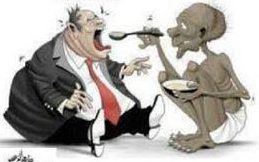
How Europe continues to underdevelop Africa.
Secondly, it’s widely known that in reality the African continent is the most resource-rich land mass on the planet, and has provided most of the resources by which Caucasian nations have profited, including, among others, diamonds, tanzanite, and columbite-tantalite or coltan. The latter is a metallic ore used in the production of almost every kind of electronic device, such as mobile phones, computer hard drives, automobile electronics etc., the devices by which Caucasian nations currently profit. It’s not accidental that while the destabilization of African governments, particularly by agents of the USA, is escalating, the American stock market is booming, and the companies with the highest levels of profitability are technology companies. It’s also well known that every African country is currently being leeched by a Caucasian nation state and/or an aid organization which siphons off most of its wealth, and this is the broad framework within which Caucasian nations are wealthy and African nations are poor.
Thus, the suggestion in the Black Panther story arc that a country on the African continent is the most resource rich country on the planet is allegorical; the idea that Black people control this resource is political. But how do Africans, both on the continent and in the diaspora, think about this?
This is the crux of the discourse between Africa and its diaspora, and the answer to the question determines the future of Black people. For the answer determines whether the paradigm within which we are being slowly but inexorably destroyed remains intact or whether we rid the planet of it. Black Panther, the movie provided the difficult answer to the question, and it was an answer too hard to swallow for some Black folks.
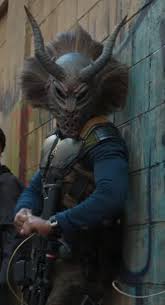
Killmonger’ s plan is to start a revolution the likes of which the world has never seen.
Killmonger’s answer was to initiate an aggressive frontal attack on the paradigm. His starting point was Wakanda itself. True to the vow he made to himself, he challenged T’Challa to ritual combat and almost killed the monarch by throwing him off a very high cliff. Upon ascending the throne, Killmonger started his revolution, beginning with civil war inside Wakanda itself. T’Challa, however, fortified by the herb which makes the Black Panther invincible, did not die, and he returned to challenge Killmonger, and killed him.
This sparked a heated debate among Black audiences who understood the plot as allegorical, and who related it to the reality of the Black experience. Many people expressed the view that the death of Killmonger at the hands of T’Challa represented a betrayal to the cause for which so many revolutionaries, including the Black Panther Revolutionary Party, fought and died. But in actuality, the vision imparted by the film was far more astute.
T’Challa returned to the place where Killmonger was orphaned, touching down in the projects in his sleek, high-tech flying car. With his enormous wealth, he purchased the ghetto in which Killmonger grew up; his plan: to initiate a pilot project that would transform the area into high-tech educational and housing facilities, and to pass on the knowledge of Wakanda to the people outside.
In the final scene, while little Black boys ogle T’Challa’s fabulous vehicle, one of them breaks away from the group and approaches T’Challa, his intelligent face a picture of curiosity. He peers up at the African king and asks: “Who are you?” T’Challa smiles down at the boy, his face beaming with acceptance.
A fitting end, and a perfect solution. That question opens up the possibility of the beginning of a new discourse between Africa and Black people throughout the diaspora. It is fitting that Africa converse with Africans at home and abroad, as opposed to continually beseeching Caucasians in the language of acquiescence to the destructive power of the paradigm; the language of compromise and culpability in the paradigm’s corruption; the language of ignorance of our wealth, our power, and our collective heritages; the language of defeat. It’s fitting that Africa confers upon us its vast storehouse of wisdom and knowledge of our past, as opposed to posturing as a benighted place, someplace in need of Caucasian ideas, because Caucasian ideas have not yet come close to the sheer brilliance of African philosophy, science, entrepreneurship and spirituality.
Why should Africa present an image of itself as a place of paucity and lack, a place yearning to take an inferior place among inferior Caucasian nations, when Africa is the source of the very concept of civilization? It’s time Africa present to Africans at home and abroad a vision of all we can be now and in the future, because those of us in the diaspora look to Africa for leadership.
As such, the movie challenges all of us to facilitate a final destruction of the Caucasian paradigm. The paradigm can only be destroyed by knowledge, for it retains its power through ignorance, obfuscation and mis-information. War will not kill the paradigm, for war is the means by which people are kept from fulfilling their potential. War destabilizes populations, while knowledge builds up civilizations. The knowledge must be such that people can consciously recognize the paradigm, recognize the fallacy of the evolutionary timeline of the paradigm, and recognize that beyond anno domini, where there were Black civilizations which really were not colonized by the Caucasian paradigm, we can find freedom.
It is said that Ryan Coogler and Michael B. Jordan are already discussing their next film project – the story of Mansa Mousa, who was the Emperor of the African kingdom of Mali during the so-called 14th Century. Mansa Mousa is acknowledged as being the richest man who has ever lived. It is hoped that a story about a real-life super rich Black monarch who ruled a real-life advanced African kingdom that in real life was untouched by the Caucasian paradigm will be financed by Black billionaires and will reach the heights of the allegorical film, to become an even greater inspiration to Black people.


- Log in to post comments
- 15441 reads

































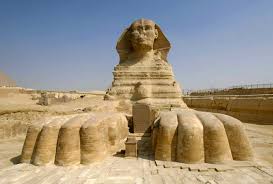

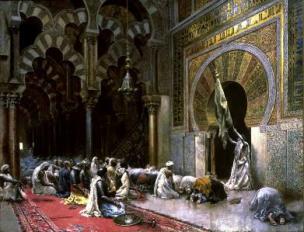





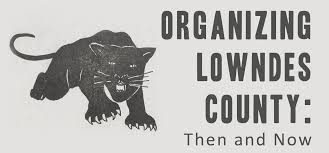

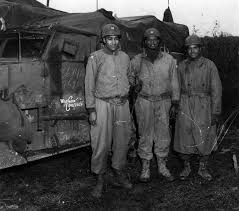

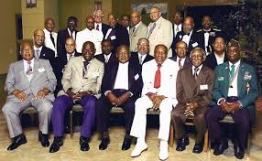






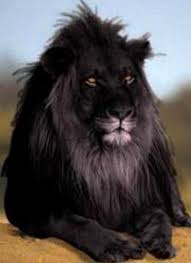
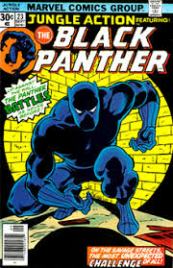
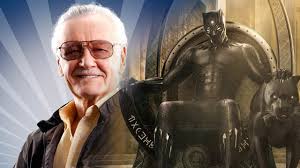
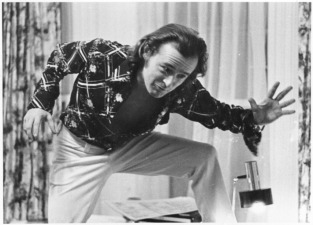






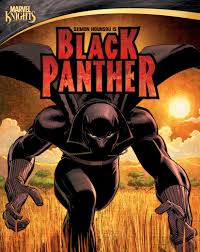

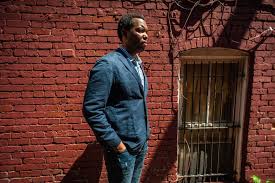

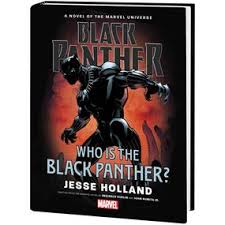
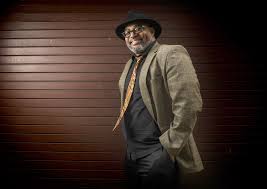





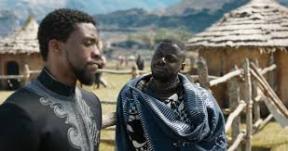

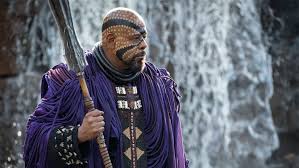
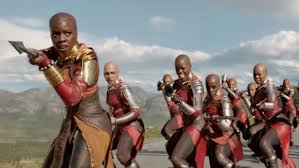
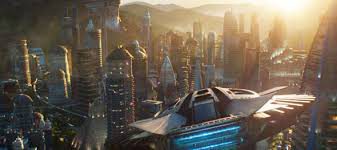


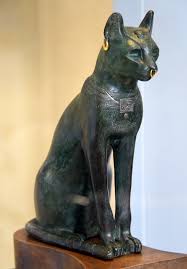

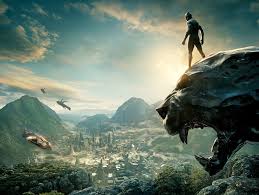

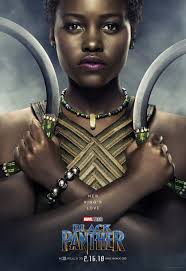

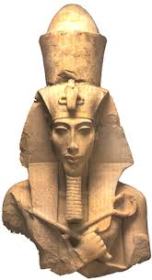



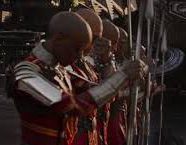

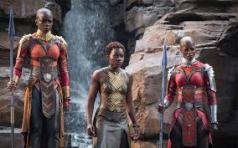





Comments (2)